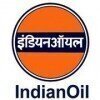Junior Engineering Assistant
10+ Junior Engineering Assistant Interview Questions and Answers

Asked in Motherson Sumi Wiring

Q. What are the differences between 2-stroke and 4-stroke engines?
2-stroke engines have one power stroke per revolution, while 4-stroke engines have one power stroke every two revolutions.
2-stroke engines have a simpler design with fewer moving parts compared to 4-stroke engines.
2-stroke engines require a fuel-oil mixture for lubrication, while 4-stroke engines have a separate oil reservoir.
2-stroke engines are lighter and produce more power for their size, but are less fuel efficient than 4-stroke engines.
Examples: 2-stroke engines are com...read more

Asked in NeoSOFT

Q. How do you pass data from one component to another?
Passing data between components can be achieved through various methods.
Using input and output decorators to pass data between parent and child components
Using services to share data between unrelated components
Using event emitters to pass data from child to parent components
Using routing parameters to pass data between components
Using state management libraries like Redux or NgRx

Asked in Linde India

Q. What is the difference between an IC engine and an EC engine?
IC engines are internal combustion engines where fuel is burned internally, while EC engines are external combustion engines where fuel is burned externally.
IC engines have combustion happening inside the engine, like in a car engine.
EC engines have combustion happening outside the engine, like in a steam engine.
IC engines are more common in vehicles, while EC engines are used in power plants.
IC engines are more efficient in terms of power output, while EC engines are more ef...read more

Asked in Vishvaraj Environment

Q. Tell me about your field of study.
Engineering is a field that involves the application of scientific and mathematical principles to design and create structures, machines, systems, and processes.
Engineering encompasses various disciplines such as civil, mechanical, electrical, and chemical engineering.
Engineers use their knowledge to solve complex problems and improve existing technologies.
Examples of engineering projects include designing bridges, developing new medical devices, and creating sustainable ener...read more

Asked in Linde India

Q. Explain Joule law's and Newton's laws
Joule's law relates to the heat produced by a current passing through a resistor, while Newton's laws describe the relationship between an object's motion and the forces acting on it.
Joule's law states that the heat produced by a current passing through a resistor is directly proportional to the square of the current and the resistance of the resistor. It can be expressed as Q = I^2 * R, where Q is the heat produced, I is the current, and R is the resistance.
Newton's laws of ...read more

Asked in Linde India

Q. Gear Terminology and types of Gear.
Gear terminology includes pitch, module, pressure angle, and types of gears include spur, helical, bevel, worm, etc.
Gear terminology includes pitch, module, pressure angle, and tooth profile.
Types of gears include spur, helical, bevel, worm, rack and pinion, etc.
Spur gears have straight teeth and are used for parallel shafts.
Helical gears have angled teeth for smoother operation.
Bevel gears are used for intersecting shafts.
Worm gears have a screw-like appearance and are used ...read more

Asked in Indian Oil Corporation

Q. Compressor types and start up shut down activities
Compressor types include centrifugal, reciprocating, rotary, and screw. Start up activities involve checking oil levels, ensuring proper ventilation. Shutdown activities include cooling down the compressor.
Compressor types: centrifugal, reciprocating, rotary, screw
Start up activities: check oil levels, ensure proper ventilation
Shutdown activities: cool down the compressor
Examples: Centrifugal compressor, Reciprocating compressor

Asked in Linde India

Q. Explain Boyle's Law.
Boyle's law states that the pressure of a gas is inversely proportional to its volume at a constant temperature.
Boyle's law can be mathematically expressed as P1V1 = P2V2, where P represents pressure and V represents volume.
This law is based on the assumption that the temperature remains constant.
As the volume of a gas decreases, its pressure increases, and vice versa.
Boyle's law is commonly used in various fields such as chemistry, physics, and engineering.
Share interview questions and help millions of jobseekers 🌟


Asked in Indian Oil Corporation

Q. What is the pump changeover procedure?
Pump change over procedure involves switching from one pump to another to ensure continuous operation.
Ensure the pump to be switched off is properly isolated and drained.
Verify the new pump is in good working condition before starting.
Follow manufacturer's instructions for proper installation and connection.
Test the new pump before putting it into full operation.
Update any necessary documentation or log the changeover process.

Asked in Jindal Stainless

Q. What is BHN?
BHN stands for Brinell Hardness Number, a measure of material hardness determined by indentation.
BHN is calculated by applying a specific load to a hard steel or carbide ball pressed into the material's surface.
The diameter of the indentation left on the material is measured to determine hardness.
Commonly used for metals, BHN helps in comparing material strength and wear resistance.
Example: A steel with a BHN of 200 is harder than one with a BHN of 150.

Asked in Jindal Stainless

Q. What is BHN NUMBER
BHN number, or Brinell Hardness Number, measures material hardness using a specific test method.
BHN is calculated by applying a specific load on a hard steel or carbide ball pressed into the material.
The formula for BHN is: BHN = (2P) / (πD(D - √(D² - d²))), where P is the load, D is the ball diameter, and d is the indentation diameter.
Common materials tested include metals like steel, aluminum, and cast iron.
BHN values help in comparing the hardness of different materials; f...read more
Asked in Varanasi Smart City

Q. What are the differences between AC and DC current?
AC current continuously changes direction while DC current flows in one direction.
AC current alternates direction periodically
DC current flows in one direction constantly
AC current is used in household appliances
DC current is used in batteries and electronic devices

Asked in NeoSOFT

Q. Explain routing and module
Routing is the process of selecting a path for network traffic. A module is a self-contained unit of code that performs a specific task.
Routing determines the best path for data to travel between two points in a network.
Modules are used to break down complex tasks into smaller, more manageable pieces of code.
Routing protocols include OSPF, BGP, and EIGRP.
Modules can be reused in different parts of a program or in different programs altogether.

Asked in NeoSOFT

Q. Data types of JavaScript
JavaScript has 7 data types - number, string, boolean, null, undefined, symbol, and object.
Number - represents numeric values
String - represents textual values
Boolean - represents true/false values
Null - represents intentional absence of any object value
Undefined - represents uninitialized variables
Symbol - represents unique identifiers
Object - represents complex data structures

Asked in Vineforce IT Services

Q. What is the life cycle of Angular?
Angular has a life cycle consisting of several phases that occur during the creation, rendering, and destruction of a component.
Angular components go through several phases: creation, initialization, rendering, and destruction
During the creation phase, the component is instantiated and its dependencies are injected
During the initialization phase, the component's properties are initialized
During the rendering phase, the component's view is created and rendered
During the destru...read more

Asked in Jindal Stainless

Q. What is the full form of DRI?
DRI stands for Dietary Reference Intake, a set of nutrient reference values for healthy individuals.
DRI includes various categories like RDA (Recommended Dietary Allowance) and AI (Adequate Intake).
It helps in assessing and planning diets for individuals and populations.
For example, the RDA for Vitamin C is 90 mg for adult men and 75 mg for adult women.
DRIs are used by health professionals to ensure nutritional adequacy.
Interview Questions of Similar Designations
Interview Experiences of Popular Companies






Calculate your in-hand salary
Confused about how your in-hand salary is calculated? Enter your annual salary (CTC) and get your in-hand salary


Reviews
Interviews
Salaries
Users










